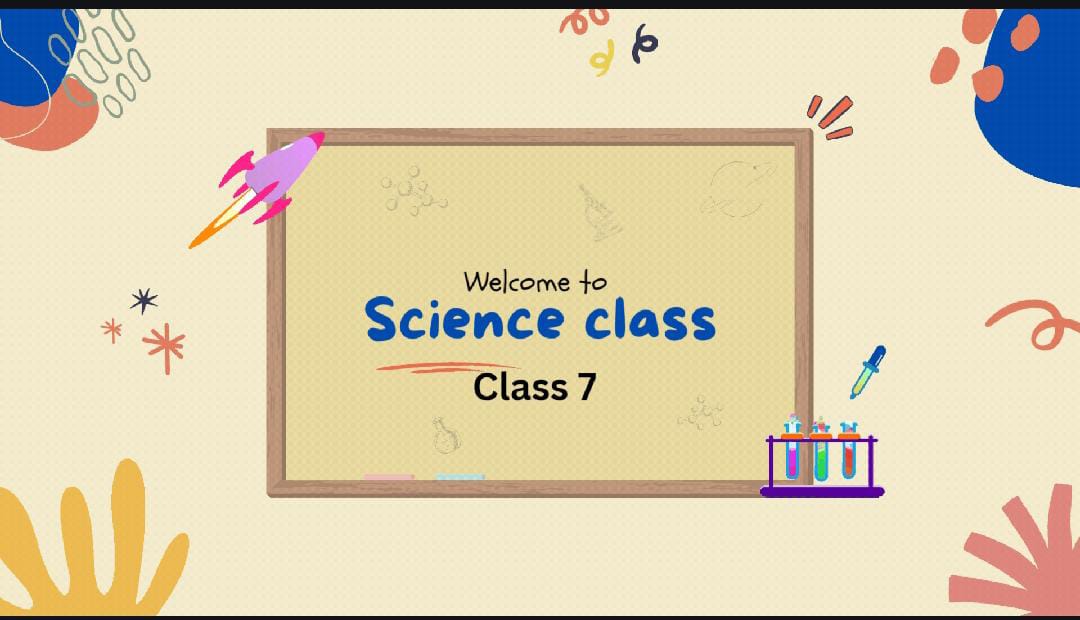NCERT Class VII – Science

About Course
The NCERT Class 7 Science textbook is designed to introduce students to fundamental scientific concepts and principles in a structured and engaging way. Here’s a general overview of what it covers:
1. **Food: Where Does It Come From?**
– Discusses different sources of food, including plants and animals.
– Explores the concept of food chains and the importance of various food items for health.
2. **Components of Food**
– Explains nutrients and their functions, such as carbohydrates, proteins, fats, vitamins, and minerals.
– Includes experiments and tests to understand the presence of different nutrients in food.
3. **Fibre to Fabric**
– Covers the process of making fabric from natural and synthetic fibers.
– Discusses different types of fibers, their sources, and their uses.
4. **Heat**
– Introduces the concept of heat and temperature.
– Explains methods of heat transfer (conduction, convection, and radiation) and their applications.
5. **Acids, Bases, and Salts**
– Explores the properties of acids and bases, and how they interact.
– Includes practical experiments to identify acids and bases and their effects.
6. **Physical and Chemical Changes**
– Differentiates between physical and chemical changes.
– Provides examples and experiments to illustrate these concepts.
7. **Weather, Climate, and Adaptations of Animals to Climate**
– Discusses weather and climate, and how they affect living organisms.
– Looks at how animals adapt to their environments.
8. **Winds, Storms, and Cyclones**
– Examines different weather phenomena, including winds, storms, and cyclones.
– Explains their causes and effects on the environment.
9. **Soil**
– Covers the formation, types, and properties of soil.
– Includes information on soil conservation and its importance for agriculture.
10. **Rocks and Minerals**
– Introduces different types of rocks and minerals.
– Discusses their formation, properties, and uses.
11. **Body Movements**
– Describes the structure and function of the human skeletal and muscular systems.
– Explains how different body parts enable movement.
12. **Transportation in Animals and Plants**
– Looks at how nutrients and fluids are transported in animals and plants.
– Discusses the circulatory system in animals and the vascular system in plants.
13. **Reproduction in Plants**
– Explores how plants reproduce, including pollination and seed formation.
– Discusses different methods of plant reproduction.
14. **Motion and Time**
– Introduces the concept of motion and how it is measured.
– Discusses different types of motion and the use of clocks and calendars.
15. **Electric Current and its Effects**
– Explains the basics of electric current and its effects, such as heating and magnetic effects.
– Includes simple experiments with circuits.
16. **Light**
– Covers the nature of light, its properties, and how it behaves (reflection, refraction, etc.).
– Includes experiments to demonstrate these properties.
17. **Water**
– Discusses the importance of water, its properties, and the water cycle.
– Examines issues related to water conservation.
18. **Air**
– Explores the composition of air and its properties.
– Discusses the role of air in different natural processes.
The textbook is rich with illustrations, experiments, and activities designed to make learning science enjoyable and interactive for students.
Course Content
Chapter 1 – Nutrition in Plants
Chapter 2 – Nutrition in Animals
Chapter 3 – Heat
Chapter 4 – Acids, Bases and Salts
Chapter 5 – Physical and Chemical Changes
Chapter 6 – Respiration in Organisms
Chapter 7 – Transportation in Animals and Plants
Chapter 8 – Reproduction in Plants
Chapter 9 – Motion and Time
Chapter 10 – Electric Current and Its Effects
Chapter 11 – Light
Chapter 12 – Forests: Our Lifeline
Chapter 13 – Wastewater Story
Chapter 13 – Wastewater Story
Student Ratings & Reviews
